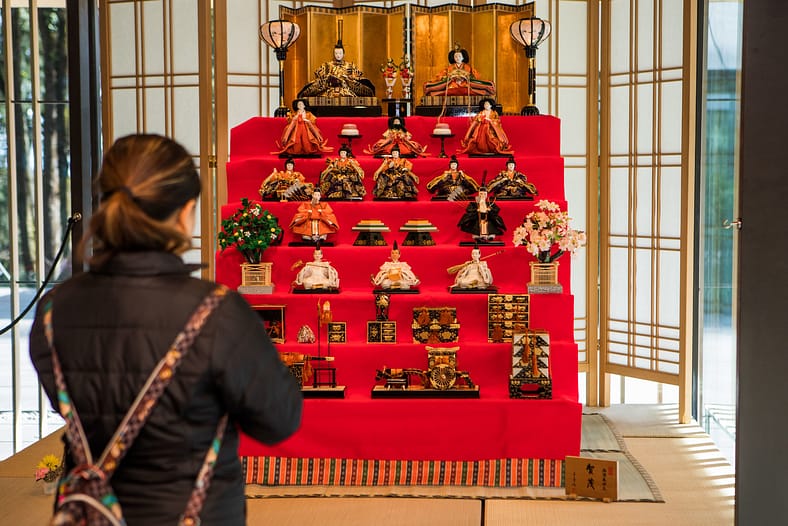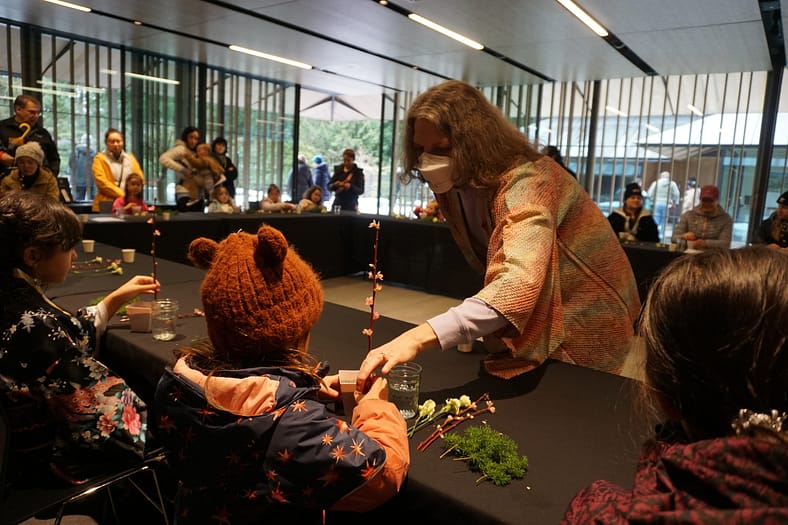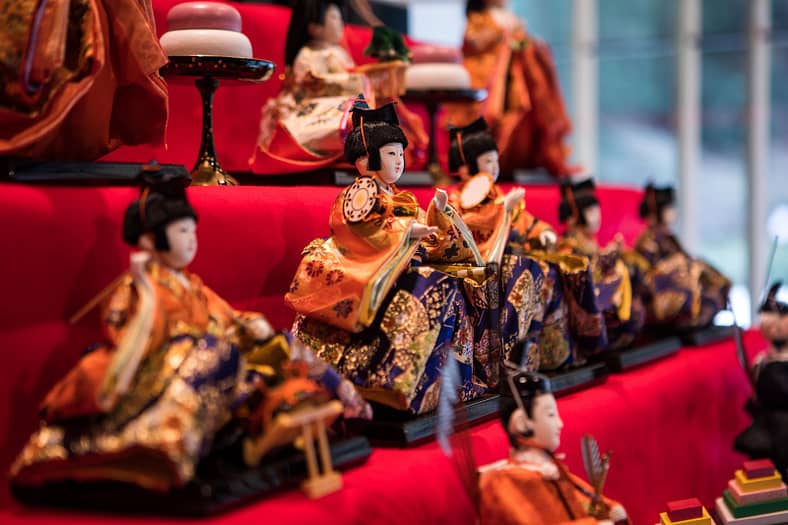
Hina Matsuri, also called Doll’s Day or Girl’s Day, is celebrated each year in Japan on March 3 to celebrate the happiness, growth, and good health of girls. In Japan, families with daughters mark the festival by displaying intricately crafted hina dolls dressed in ornate costumes several days before the festival. Visitors can view and take photos with a traditional display of hina dolls in the Cathy Rudd Cultural Corner.
March 3 is also called Momo-no-Sekku, or Peach Blossom Festival, because according to the lunar calendar peach blossoms were in full bloom on this day. It was also believed that peach blossoms had the power to drive away evil spirits. At Portland Japanese Garden, like many families in Japan, we display sprigs of peach blossoms together with hina dolls. An ikebana arrangement by Carolyn Alter, Head Teacher of the Ohara School of Ikebana’s Oregon Chapter, featuring peach blossoms will accompany the display.

Festival visitors may sign up to participate in a family-friendly ikebana class, learning the fundamental foundations of ikebana and creating their very own arrangement to take home. Each ikebana workshop can have 18 attendees on a first come first served basis. The workshops in the Yanai Classroom will take place at the following times:
1st Workshop: 11:00 am-11:30 am
2nd Workshop: 12:00-12:30 pm
3rd Workshop: 1:00-1:30 pm
In the Miller Living Room, two family-friendly music and dance performances by TAKOHACHI – Kotori Kai Shamisen School from 10:45 -11:15 am and again at 11:45 am – 12:15 pm in the Cathy Rudd Cultural Corner. The performances will feature Tsugaru shamisen (a three-stringed lute), taiko drums, shinobue (a side-blown bamboo flute with a high-pitched sound), minyo (Japanese folk songs) vocals, and dance.
About HINA MATSURI
Hina Matsuri is said to have originated in the Heian period (794-1185), a time when people believed that dolls had the power to drive away evil spirits. Paper or straw hina dolls were set afloat on boats down the river and out to sea, sweeping away troubles and bad spirits. This tradition called nagashi bina still takes place in some regions in Japan.
The tradition of displaying hina dolls at home began during the Edo period (1603-1868) and still takes place today. Traditionally, parents or grandparents purchase a set of hina dolls following the birth of a girl. In some instances, hina dolls are passed down from previous generations.
Hina dolls are displayed on a tiered platform (hina dan) covered with a red carpet (dankake). The top tier holds the two imperial dolls. The Emperor doll holds a ritual baton and the Empress a fan. The following tiers hold their attendants: the second tier holds three court ladies (san-nin kanjo). Each lady holds ceremonial sake equipment. The third tier holds five court musicians (gonin bayashi) each holding a musical instrument except the singer who holds a fan. The fourth tier holds two ministers (udaijin and sadaijin), the one on the right (Minister of the Left) being older and higher ranking. The three court attendees (sannin jogo) on the fifth tier each show angry, merry, and sad faces.

